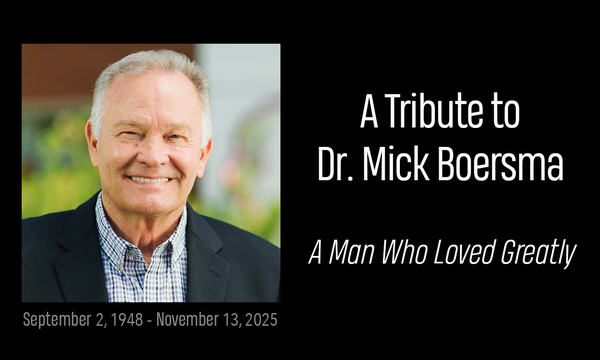I was privileged to write a chapter about the book of Judges for a volume that honors my doctoral advisor, professor Nili S. Fox. My contribution is called “Consider Her: Body-Talk as a Literary Strategy in the Book of Judges,” and the volume is called (eds. Kristine Henriksen Garroway, Christine Elizabeth Palmer, and Angela Roskop Erisman, pp. 15-48. Cincinnati: Hebrew Union College Press, 2022).
Book Description
“The clothed and adorned body has been at the forefront of Nili S. Fox's scholarship. In her hallmark approach, she draws on theoretical models from anthropology and archaeology, and locates a text within its native cultural environment in conversation with ancient Near Eastern literary and iconographic sources. This volume is a tribute to her, a collection of essays on dress and the body with original research by Fox's students. With the field of dress now garnering the attention of biblical and ancient Near Eastern scholars alike, this book adds to the growing literature on the topic, demonstrating ways in which both dress and the body communicate cultural and religious beliefs and practices. The body’s lived experience is the topic of section one, The Body Lived. The body and the social construction of identity is discussed in section two, The Body Cultured, while section three, The Body Adorned, analyzes the performative nature of dress in the biblical text” (The Body, back cover).
Chapter One Summary
“Kenneth C. Way’s chapter sees the body take center stage in the literary strategy of the book of judges. The vivid physicality in narrative description draws attention to a reversal in the corporeal fortunes of Israel, from subjecting enemy bodies to slaughter and mutilation, to themselves suffering violence and symbolic national dissolution in a concubine’s dismemberment. Ideological reflections on relationships of power and ethnic identity are communicated through the rhetorical use of the bodies of self and other” (The Body, pp. 5-6).
Excerpts from Chapter One
Enemy Bodies (Judges 1–8). The thematic focus of Judges 1–8 is on the violent subjugation of the bodies of Israel’s enemies. Enemy fingers, palms, and toes are chopped. Enemy cities are banned (ḥrłľ). Enemy bellies are stabbed, and enemy kings are mocked, subdued, fallen, and killed. Enemy heads are pegged, smashed, and severed. Enemies rape the bodies of conquered women. And Israelite bodies are occasionally empowered or co-opted by YHWH’s spirit to ensure deliverance when they continue to do the wrong thing in YHWH’s eyes. In Judges 1–8, enemy bodies speak about Canaan(ites) and the outside(rs) — Israel’s toxic surroundings. This is why the imprecation of the song of Deborah and Barak is so fitting: “So may all your enemies perish, YHWH!” (Judg 5:31). At the start of the second half of the narrative, however, the composer indicates a thematic shift away from YHWH delivering them “from the hand of all their surrounding enemies” as the Israelites forget YHWH (Judg 8:34).
Israelite Bodies (Chapters 8–21). The thematic focus of Judges 8–21 is the continuation of the violent subjugation of bodies, except that Israel takes the place of the enemy and incurs the wrath of itself and YHWH. Israelite bodies are threshed, prostituted, stabbed, slaughtered, and fallen. Their heads are smashed, and their eyes are gouged out. Israel’s bodies are mocked, sheared, and married to outsiders who worship other gods. Israelites are apathetic about or ignorant of YHWH’s Torah and covenant. Israelite bodies may dress with divine clothes, and they dress and steal divine images made by their own hands. YHWH’s spirit occasionally empowers Israelite bodies to ensure a modicum of deliverance, but YHWH also leaves and lets Israel violate and dismember itself because they eschew YHWH’s authority and do the right thing in their own eyes. Israelite daughters are sacrificed and their women are raped, murdered, dissected, distributed, and exterminated by Israelites. A nearly united Israel bans (ḥrłľ) their own urban bodies and they nearly amputate one of their tribal members by genocidal initiatives. In Judges 8–21, Israelite bodies speak about corporate Canaanization (alternatively, Amoritization, Amalekization, or Philistinization)—that is, cultural and religious assimilation with their surroundings, and Israelite bodies communicate covenant jeopardy that is self-inflicted. This is why the composer reveals that “YHWH had made a rupture in the tribal-body of Israel” (Judg 21:15).
Conclusion. The body is revelatory; it does indeed “talk.” The composer of Judges clearly uses corporal motifs to communicate a theological message: YHWH’s body is Canaanized by Israelites, and Israelites are Canaanized as they take the corporal places of outsiders/enemies. The composer depicts Israelites in the roles of the Canaanites. Specifically, Israelite bodies in chapters 8–21 are treated the way enemies (Canaanites or other outsiders) are treated in chapters 1–8. The Canaanite enemy who is dismembered at the beginning of the book of Judges is displaced by the nation of Israel, which is dismembered at the end. Israel becomes the enemy, and Israel is treated as such through its application of the ban (ḥrłľ). The ban and the civil war in the closing chapters serve ironically as YHWH’s judgment because corporal Israel becomes progressively like its neighbors in both behavior and belief. YHWH is, after all, the ultimate judge who brings justice to Israel.
 Biola University
Biola University


.jpg)
.jpg)
